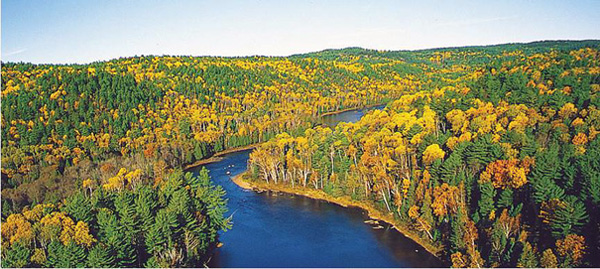Study Underscores Forests / Forest Products Role in Climate Change
![]() Print this Article | Send to Colleague
Print this Article | Send to Colleague
The Forest Products Association of Canada (FPAC) is applauding an issues paper released by the Canadian Climate Forum that documents how forests and products made from tree fiber will play an increasingly critical role in the transition to a low carbon economy.The study "Contributing to Climate Change Solutions" authored by scientist Dr. Stephen Colombo was released at a recent n event sponsored by FPAC.
The paper explains how forests and trees play a dual role in mitigating climate change. Forests store vast amounts of carbon, a greenhouse gas responsible for climate change. Canadian forests absorbed 150 million metric tons of carbon dioxide from the air in 2013, more than all of Canada’s emissions from cars and trucks in the same year. Trees also provide a sustainable supply of raw materials for products that have lower carbon footprints than their alternatives. About 39 million metric tons of carbon are stored in wood products harvested from Canadian managed forests in 2013.

"The carbon forests sequester from the atmosphere is increasingly important given the risks climate change poses to Canada and the rest of the world." said Colombo. "Sustainably managed Canadian forests and products made from trees can contribute to the critically important objective of reducing global warming."
David Lindsay, president and CEO of FPAC, said that "we are delighted to see this paper confirm how our renewable forests can play a role in mitigating climate change.The fact that products made from wood and tree fiber are also preferable from the perspective of carbon means our sector can help in the transition to a low carbon economy while also contributing to jobs and economic growth." Forest products include traditional lumber and paper but also new innovative products such as car parts, green chemicals, and advanced construction systems.
The paper also notes that climate change is having a direct impact on Canadian forests with increasing forest fires and more devastating insect outbreaks such as the mountain pine beetle.
"Adapting to climate change through best practices in forest management to increase forest resilience can also be a long term investment in reducing atmospheric carbon dioxide," Colombo noted. "We need a partnership between the forest industry, local communities, Aboriginal communities, environmentalists, and all levels of government to explore evolving practices of sustainable forest management."
"What happens to the large carbon sinks in Canada’s forests and to Canada’s forest industry will have global consequences for climate change and its mitigation."
The report is available online.


